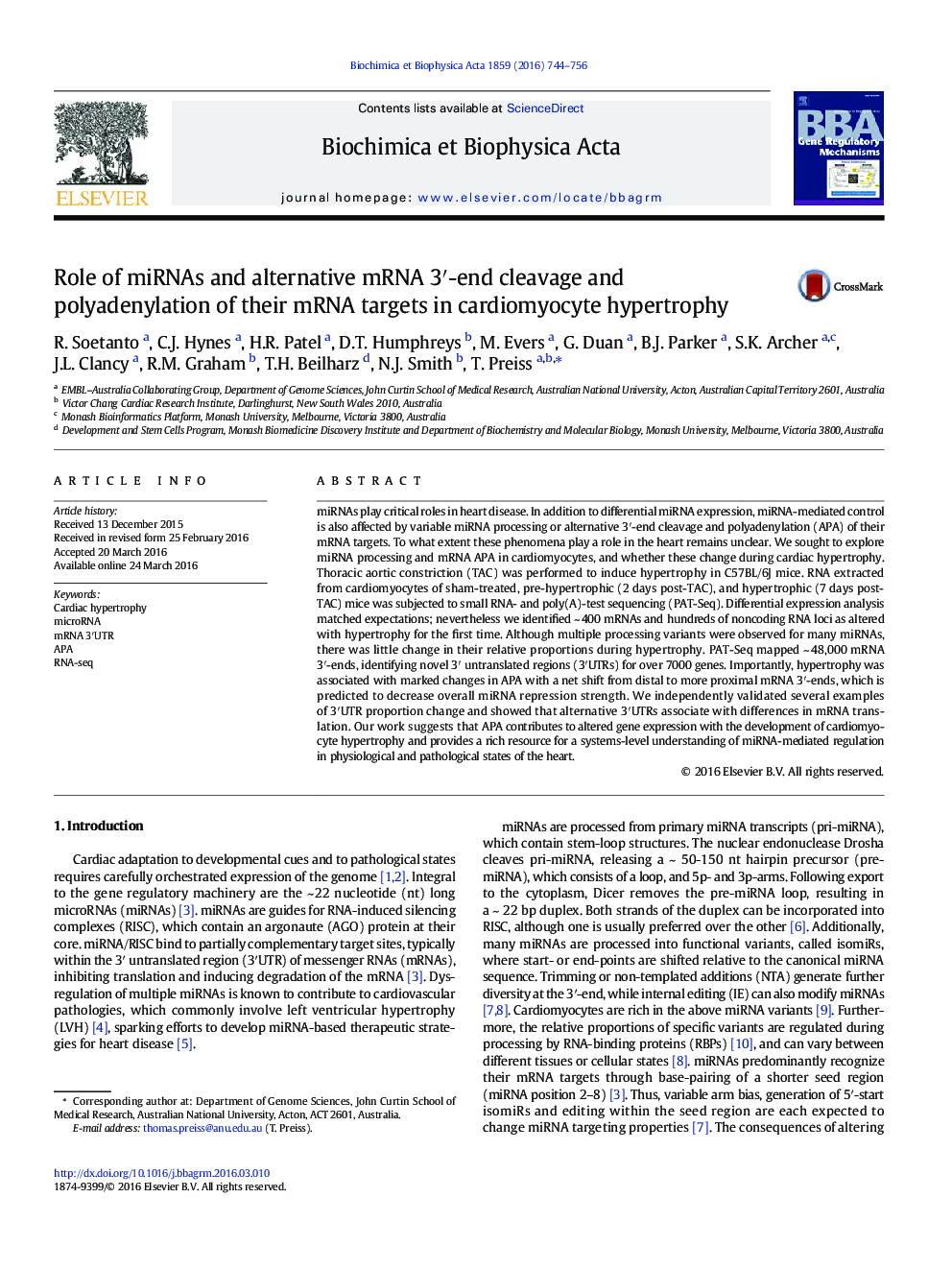| Article ID | Journal | Published Year | Pages | File Type |
|---|---|---|---|---|
| 1946318 | Biochimica et Biophysica Acta (BBA) - Gene Regulatory Mechanisms | 2016 | 13 Pages |
•A compendium of cardiomyocyte miRNA processing and mRNA and lncRNA 3′-end formation•Novel mRNA 3′UTRs were identified for over 7000 genes•Extensive documentation of changes during early TAC-induced cardiac hypertrophy•There was little change in miRNA processing but widespread deregulation of mRNA APA•mRNA APA affects miRNA targeting and mRNA translation•A net shift towards shorter mRNA 3′UTRs is a feature of early cardiac hypertrophy
miRNAs play critical roles in heart disease. In addition to differential miRNA expression, miRNA-mediated control is also affected by variable miRNA processing or alternative 3′-end cleavage and polyadenylation (APA) of their mRNA targets. To what extent these phenomena play a role in the heart remains unclear. We sought to explore miRNA processing and mRNA APA in cardiomyocytes, and whether these change during cardiac hypertrophy. Thoracic aortic constriction (TAC) was performed to induce hypertrophy in C57BL/6J mice. RNA extracted from cardiomyocytes of sham-treated, pre-hypertrophic (2 days post-TAC), and hypertrophic (7 days post-TAC) mice was subjected to small RNA- and poly(A)-test sequencing (PAT-Seq). Differential expression analysis matched expectations; nevertheless we identified ~ 400 mRNAs and hundreds of noncoding RNA loci as altered with hypertrophy for the first time. Although multiple processing variants were observed for many miRNAs, there was little change in their relative proportions during hypertrophy. PAT-Seq mapped ~ 48,000 mRNA 3′-ends, identifying novel 3′ untranslated regions (3′UTRs) for over 7000 genes. Importantly, hypertrophy was associated with marked changes in APA with a net shift from distal to more proximal mRNA 3′-ends, which is predicted to decrease overall miRNA repression strength. We independently validated several examples of 3′UTR proportion change and showed that alternative 3′UTRs associate with differences in mRNA translation. Our work suggests that APA contributes to altered gene expression with the development of cardiomyocyte hypertrophy and provides a rich resource for a systems-level understanding of miRNA-mediated regulation in physiological and pathological states of the heart.
